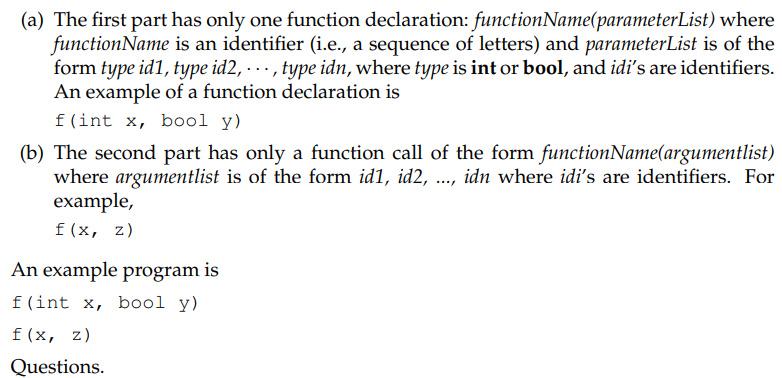Answered step by step
Verified Expert Solution
Question
1 Approved Answer
Semantic Analysis (30) Consider programs consisting of two parts (a) The first part has only one function declaration: functionName(parameterList) where functionName is an identifier (i.e.,
Semantic Analysis



(30) Consider programs consisting of two parts (a) The first part has only one function declaration: functionName(parameterList) where functionName is an identifier (i.e., a sequence of letters) and parameterList is of the form type id1, type id2, ..., type idn, where type is int or bool, and idi's are identifiers. An example of a function declaration is f(int x, bool y) (b) The second part has only a function call of the form functionName(argumentlist) where argumentlist is of the form idi, id2, ..., idn where idi's are identifiers. For example, f(x, z) An example program is f(int x, bool y) f(x, z) Questions. b) We would like to introduce two attributes name and number for the non- terminal symbol in your CFG that defines the function declaration. The former has a value of the function name and the latter means the number of arguments of the function. Similarly we introduce name and number for the non-terminal sym- bol in your CFG that defines the function call. The former takes, as its value, the name of the function and the latter takes, as its value, the number of arguments in the function call. Write an attribute grammar for such programs using the given attributes (and aux- iliary attributes you may need)
Step by Step Solution
There are 3 Steps involved in it
Step: 1

Get Instant Access to Expert-Tailored Solutions
See step-by-step solutions with expert insights and AI powered tools for academic success
Step: 2

Step: 3

Ace Your Homework with AI
Get the answers you need in no time with our AI-driven, step-by-step assistance
Get Started


